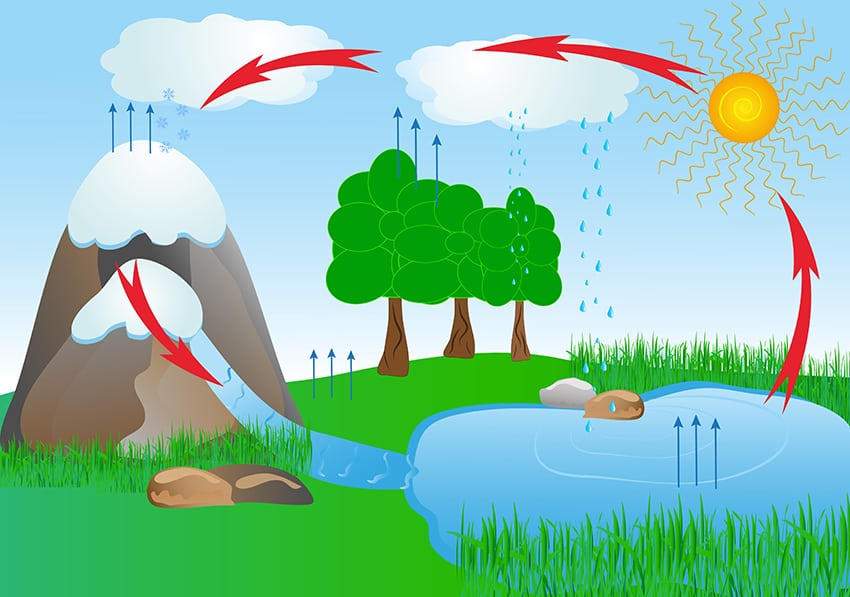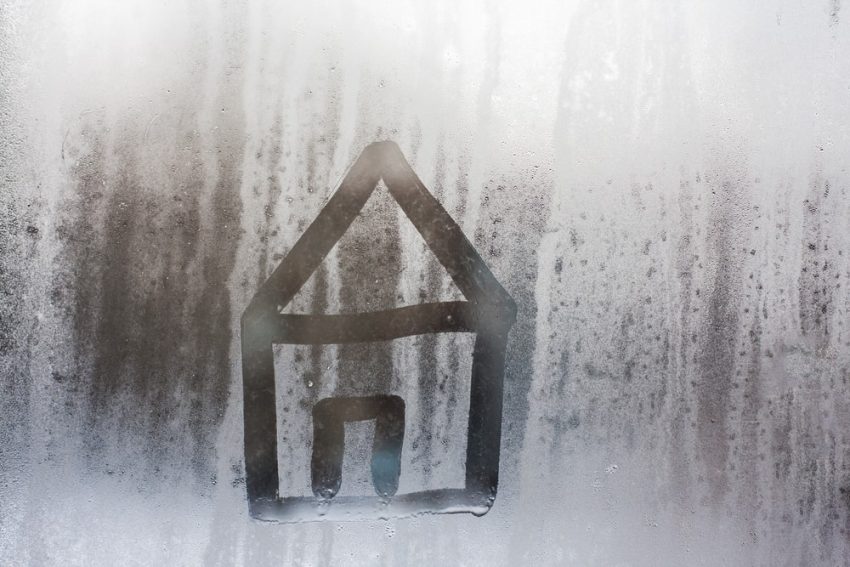The condensation It is the change of state of matter from an initial gaseous state to a liquid state, from the decrease in the temperature of the gas. This process is generally carried out at ambient pressure. For instance: the water cycle, the fog on the windshield, the vapor of breath. In that sense, it is the reverse process of vaporization.
The condensation of a gas implies a greater proximity between the particles of this substance, which in turn implies a lower mobility of these particles as a result of a decrease in their energy, that is, energy is released in the process. If this process is induced from an increase in gas pressure, it will be called liquefaction.
Examples of condensation
- Dew. The decrease in environmental temperature during the early morning allows the condensation of water vapor in the atmosphere on exposed surfaces, where it becomes drops of water known as dew. As soon as the temperature rises throughout the day, this dew evaporates and recovers its gaseous form.
- The water cycle. Water vapor in hot air normally rises to the upper layers of the atmosphere, where it encounters segments of cold air, loses its gaseous form, and condenses into clouds that fall back into liquid form on the ground through rain.

- The “sweating” of cold drinks. Being at a temperature lower than the environment, the surface of a can or bottle filled with cold soda receives moisture from the environment and condenses it in the form of droplets commonly referred to as “sweat”
- The water from the air conditioners. These devices collect water from the surrounding air, much colder than outside, and condense it inside you. Then it must be expelled through a drainage channel.
- Fog on the windshield. When driving through a fog bank, you will notice that the windshield fills with water droplets, as if it were raining. This is due to the contact of the water vapor with the surface, which, being colder, favors its condensation.
- Fogging of mirrors. Given the coldness of their surface, mirrors and glass are ideal receptors for water vapor condensation, as occurs when taking a hot shower.

- Obtaining chemicals. Condensation is often used as a method to force certain gases obtained in chemical reactions to become liquids, preventing them from getting lost when dispersed in the atmosphere. For this, they are made to pass through specially cooled pipes, in which the gas is condensed in another container.
- Fogging of diving goggles. In a similar way to what happens when taking a hot shower, the air contained between the glasses of the diving goggles and our face contains water vapor product of the perspiration of the face and the environment from which it came, and when being under the water (whose temperature is lower than air), condenses on the glass forming a visible film.
- The vapor of breath. If we breathe in front of a glass, or we breathe in an environment of low temperature and high humidity, we can see the water vapor as tiny droplets in the first case or a white smoke in the second. This is because the air in our lungs is warmer than glass or cold vapor in the environment, so it condenses and becomes visible.
- Extra heat in humid environments. This sensation that prevents our skin from cooling down due to sweating is the product of the condensation on it of water vapor from a particularly hot environment, which thus transmits an additional amount of heat to our body (colder than the surrounding air).
